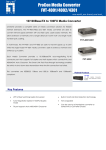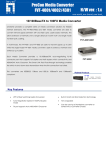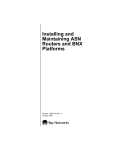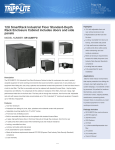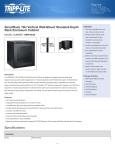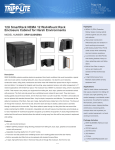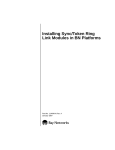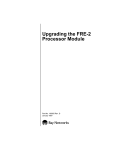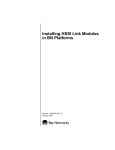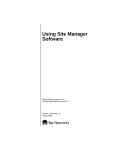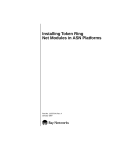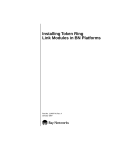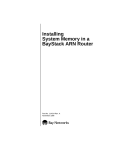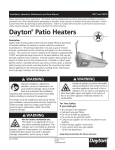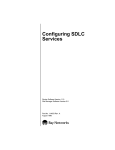Download Avaya HRPSU User's Manual
Transcript
Installing and Maintaining the HRPSU Part No. 114312 Rev. C November 1996 4401 Great America Parkway Santa Clara, CA 95054 8 Federal Street Billerica, MA 01821 Copyright © 1988–1996 Bay Networks, Inc. All rights reserved. Printed in the USA. November 1996. The information in this document is subject to change without notice. The statements, configurations, technical data, and recommendations in this document are believed to be accurate and reliable, but are presented without express or implied warranty. Users must take full responsibility for their applications of any products specified in this document. The information in this document is proprietary to Bay Networks, Inc. The software described in this document is furnished under a license agreement and may only be used in accordance with the terms of that license. A summary of the Software License is included in this document. Restricted Rights Legend Use, duplication, or disclosure by the United States Government is subject to restrictions as set forth in subparagraph (c)(1)(ii) of the Rights in Technical Data and Computer Software clause at DFARS 252.227-7013. Notice for All Other Executive Agencies Notwithstanding any other license agreement that may pertain to, or accompany the delivery of, this computer software, the rights of the United States Government regarding its use, reproduction, and disclosure are as set forth in the Commercial Computer Software-Restricted Rights clause at FAR 52.227-19. Trademarks of Bay Networks, Inc. ACE, AFN, AN, BCN, BLN, BN, BNX, CN, FN, FRE, GAME, LN, Optivity, PPX, SynOptics, SynOptics Communications, Wellfleet and the Wellfleet logo are registered trademarks and ANH, ASN, Bay•SIS, BCNX, BLNX, EZ Install, EZ Internetwork, EZ LAN, PathMan, PhonePlus, Quick2Config, RouterMan, SPEX, Bay Networks, Bay Networks Press, the Bay Networks logo and the SynOptics logo are trademarks of Bay Networks, Inc. Third-Party Trademarks All other trademarks and registered trademarks are the property of their respective owners. Statement of Conditions In the interest of improving internal design, operational function, and/or reliability, Bay Networks, Inc. reserves the right to make changes to the products described in this document without notice. Bay Networks, Inc. does not assume any liability that may occur due to the use or application of the product(s) or circuit layout(s) described herein. Portions of the code in this software product are Copyright © 1988, Regents of the University of California. All rights reserved. Redistribution and use in source and binary forms of such portions are permitted, provided that the above copyright notice and this paragraph are duplicated in all such forms and that any documentation, advertising materials, and other materials related to such distribution and use acknowledge that such portions of the software were developed by the University of California, Berkeley. The name of the University may not be used to endorse or promote products derived from such portions of the software without specific prior written permission. SUCH PORTIONS OF THE SOFTWARE ARE PROVIDED “AS IS” AND WITHOUT ANY EXPRESS OR IMPLIED WARRANTIES, INCLUDING, WITHOUT LIMITATION, THE IMPLIED WARRANTIES OF MERCHANTABILITY AND FITNESS FOR A PARTICULAR PURPOSE. In addition, the program and information contained herein are licensed only pursuant to a license agreement that contains restrictions on use and disclosure (that may incorporate by reference certain limitations and notices imposed by third parties). ii 114312 Rev. C USA Requirements Only Federal Communications Commission (FCC) Compliance Notice: Radio Frequency Notice This equipment generates, uses, and can radiate radio-frequency energy. If you do not install and use this equipment according to the instruction manual, this product may interfere with radio communications. This product has been tested and found to comply with the limits for a Class A computing device, pursuant to Subpart J of Part 15 of FCC Rules. Operation is subject to the following two conditions: (1) this device may not cause harmful interference, and (2) this device must accept any interference received, including interference that may cause undesired operation. Operating this equipment in a residential area is likely to interfere with radio communications; in which case, the user, at his/her own expense, must correct the interference. Shielded-compliant cables must be used with this unit to ensure compliance with the Class A limits. EN 55 022 Declaration of Conformance This is to certify that the Bay Networks products in this book are shielded against the generation of radio interference in accordance with the application of Council Directive 89/336/EEC, Article 4a. Conformity is declared by the application of EN 55 022:1987 Class A (CISPR 22:1985/BS 6527:1988). 114312 Rev. C iii Japan/Nippon Requirements Only Voluntary Control Council for Interference (VCCI) Statement Voluntary Control Council for Interference (VCCI) Statement This equipment is in the 1st category (information equipment to be used in commercial and/or industrial areas) and conforms to the standards set by the Voluntary Control Council for Interference by Data Processing Equipment and Electronic Office Machines that are aimed at preventing radio interference in commercial and/or industrial areas. Consequently, when this equipment is used in a residential area or in an adjacent area thereto, radio interference may be caused to equipment such as radios and TV receivers. Compliance with the applicable regulations is dependent upon the use of shielded cables. The user is responsible for procuring the appropriate cables. Read instructions for correct handling. iv 114312 Rev. C Bay Networks Software License Note: This is Bay Networks basic license document. In the absence of a software license agreement specifying varying terms, this license -- or the license included with the particular product -- shall govern licensee’s use of Bay Networks software. This Software License shall govern the licensing of all software provided to licensee by Bay Networks (“Software”). Bay Networks will provide licensee with Software in machine-readable form and related documentation (“Documentation”). The Software provided under this license is proprietary to Bay Networks and to third parties from whom Bay Networks has acquired license rights. Bay Networks will not grant any Software license whatsoever, either explicitly or implicitly, except by acceptance of an order for either Software or for a Bay Networks product (“Equipment”) that is packaged with Software. Each such license is subject to the following restrictions: 1. Upon delivery of the Software, Bay Networks grants to licensee a personal, nontransferable, nonexclusive license to use the Software with the Equipment with which or for which it was originally acquired, including use at any of licensee’s facilities to which the Equipment may be transferred, for the useful life of the Equipment unless earlier terminated by default or cancellation. Use of the Software shall be limited to such Equipment and to such facility. Software which is licensed for use on hardware not offered by Bay Networks is not subject to restricted use on any Equipment, however, unless otherwise specified on the Documentation, each licensed copy of such Software may only be installed on one hardware item at any time. 2. Licensee may use the Software with backup Equipment only if the Equipment with which or for which it was acquired is inoperative. 3. Licensee may make a single copy of the Software (but not firmware) for safekeeping (archives) or backup purposes. 4. Licensee may modify Software (but not firmware), or combine it with other software, subject to the provision that those portions of the resulting software which incorporate Software are subject to the restrictions of this license. Licensee shall not make the resulting software available for use by any third party. 5. Neither title nor ownership to Software passes to licensee. 6. Licensee shall not provide, or otherwise make available, any Software, in whole or in part, in any form, to any third party. Third parties do not include consultants, subcontractors, or agents of licensee who have licensee’s permission to use the Software at licensee’s facility, and who have agreed in writing to use the Software only in accordance with the restrictions of this license. 7. Third-party owners from whom Bay Networks has acquired license rights to software that is incorporated into Bay Networks products shall have the right to enforce the provisions of this license against licensee. 8. Licensee shall not remove or obscure any copyright, patent, trademark, trade secret, or similar intellectual property or restricted rights notice within or affixed to any Software and shall reproduce and affix such notice on any backup copy of Software or copies of software resulting from modification or combination performed by licensee as permitted by this license. 114312 Rev. C v Bay Networks Software License (continued) 9. Licensee shall not reverse assemble, reverse compile, or in any way reverse engineer the Software. [Note: For licensees in the European Community, the Software Directive dated 14 May 1991 (as may be amended from time to time) shall apply for interoperability purposes. Licensee must notify Bay Networks in writing of any such intended examination of the Software and Bay Networks may provide review and assistance.] 10. Notwithstanding any foregoing terms to the contrary, if licensee licenses the Bay Networks product “Site Manager,” licensee may duplicate and install the Site Manager product as specified in the Documentation. This right is granted solely as necessary for use of Site Manager on hardware installed with licensee’s network. 11. This license will automatically terminate upon improper handling of Software, such as by disclosure, or Bay Networks may terminate this license by written notice to licensee if licensee fails to comply with any of the material provisions of this license and fails to cure such failure within thirty (30) days after the receipt of written notice from Bay Networks. Upon termination of this license, licensee shall discontinue all use of the Software and return the Software and Documentation, including all copies, to Bay Networks. 12. Licensee’s obligations under this license shall survive expiration or termination of this license. vi 114312 Rev. C Chapter 1 Overview of the HRPSU This chapter describes the HRPSU (High Power Redundant Power Supply Unit) power rack and power supply module, and describes preparing for installation. Introduction to the HRPSU The HRPSU is a hot-swappable power supply that provides uninterrupted operation to network devices in the event of a network device power supply failure. The HRPSU is a standalone unit that can support up to four network devices equipped with redundant power supply outlets. The HRPSU is a modular system consisting of a power rack (Order No. AA0002001) with slots for four power supply modules (Order No. AA0005003). You can install as many modules as needed, between one and four, in the power rack. Figure 1-1 shows an HRPSU with all four power supply modules installed. Redunant Redunant Redunant Redunant AC Power Module AC Power Module AC Power Module AC Power Module Power OK Power OK Power OK Power OK HRP0001A Figure 1-1. 114312 Rev. C HRPSU (High Power Redundant Power Supply Unit) 1-1 Installing and Maintaining the HRPSU The HRPSU supports devices requiring up to 210 watts of power, as well as those with lower power requirements. Each power supply module in the HRPSU operates independently. For example, if you need to replace a power supply module, you can turn off that module’s power switch, leaving the other modules operational. Figure 1-2 shows the front of the HRPSU with the front panels removed from two slots, and a power supply module. The blank front panel on each power supply slot normally remains on the HRPSU until a module is installed. The power supply module, which has a permanent front panel, is provided with a latch for handling the module and for keeping it in place during operation. HRPSU Power Rack Power Supply Module Backplane Flange Blank front panels Hot Swap connector Latch Access barrier HRP0003A Figure 1-2. 1-2 HRPSU Power Rack and Power Supply Module 114312 Rev. C Overview of the HRPSU Hot-swap connectors on each power supply module connect the input and output signals of the power supply to the power rack backplane. The hot-swappable feature allows you to install the HRPSU without turning off the power to the network devices. Redundancy is provided with no down-time on the network. A safety door inside each power supply slot prevents hands or other objects from touching the connector on the backplane. In Figure 1-2, the open slot on the right shows a safety door in locked position. The open slot on the left shows the power supply connector on the backplane. When you insert a power supply module into the slot, the flange on the rear of the module releases the safety door, allowing the module to connect to the backplane. The module’s power switch, located on the front panel, is recessed deeply to prevent you from accidentally turning off the module. Figure 1-3 shows the rear of the HRPSU power rack. Each power supply slot is identified by a number (1 - 4) stamped into the metal at the back upper edge of the HRPSU power rack. Connector Standoffs 24-Pin Output Connector Power Supply Module ID numbers 4 3 2 UL 1 UL AC Power Plug AC Power Switch HRP0002A Figure 1-3. 114312 Rev. C Rear View of HRPSU 1-3 Installing and Maintaining the HRPSU For network devices that use 16-pin cables, you must install a connector adapter to attach the cable to the HRPSU. Depending on the particular network device type, the HRPSU attaches to network devices using 16-pin cables or 24-pin cables. For example: • The ASN uses a single 24-pin cable. • BayStack and Distributed 5000 device’s use a single 16-pin cable. • The 28000 family devices use two 16-pin cables. Standoffs are provided for 24-pin cable connections, and for attaching 16-pin adapters for those network devices using 16-pin cables. Once all cabling is complete and the AC power is turned on, the HRPSU is enabled; signals automatically sent to the network device inform it of the presence of the HRPSU -- no other setup is required. The HRPSU power switch turns off all power to the unit. The AC power cord plugs into a wall outlet. This allows the network device to have an AC power source separate from the HRPSU. The HRPSU requires a dedicated 15-A branch circuit for 120-V AC power service. North American and Japanese users need to use the Bay Networks 15-A power cords for their countries (Order Nos. AA0018020 and AA0020001, respectively). All other countries use the standard Bay Networks 10-A power cord, at 240 V AC, for their particular country. Preparing for Installation Before you install the HRPSU: • Check your shipment. - Verify that the items you received match the packing list attached to the shipping container. - Inspect all items for damage. If any parts are missing or damaged, contact the Bay Networks Technical Response Center for assistance. • 1-4 Make sure that your site meets the electrical requirements described in Appendix A. 114312 Rev. C Overview of the HRPSU • Review the installation procedures in Chapter 2. Read all safety sheets included with the shipment, and the caution and warning labels on the unit. Observe all safety precautions. A Phillips screwdriver is required for some installation procedures. 114312 Rev. C 1-5 Chapter 2 Installing the HRPSU This chapter describes • Cabling options for network devices • Mounting the HRPSU in a surface stack or in a rack • Installing power supply modules in the HRPSU • Installing an adapter for 16-pin cables • Connecting a network device to the HRPSU • Switching on and verifying power connection Cabling Options There are three options for cabling a network device to an HRPSU power supply module. Table 2-1 explains the options and indicates the figure that illustrates each one. Depending on your network device, you will use 24-pin cables, or 16-pin cables with an adapter. Refer to the figure for the cabling option that applies to your device. Table 2-1. 114312 Rev. C Options for Cabling a Network Device To Connect Cable Type Number of Cables Used Figure Number ASN 24-Pin 1 Figure 2-1 5000 Device 16-Pin 1 Figure 2-3 28000 Device 16-Pin 2 Figure 2-4 2-1 Installing and Maintaining the HRPSU Using One 24-Pin Cable Figure 2-1 shows the cabling between a single 24-pin redundant power connector on a network device and one HRPSU power supply module. This type of connection provides up to 210 W. Notice that the connector ends are different. The end with end-to-end screws attaches to the network device; the end with offset screws attaches to the HRPSU. An EMI gasket is supplied with the cable (see figure). You place the gasket over the connector on the power supply module before you plug in the cable. 24-pin cable End to End screws PHY 1 SD TX B S B Y P A S S FDDI-MM 34003 PHY A SD TX F P 2 2 1 DCD DCD SYNC 1 34001 F 3 OUT ETHERNET 34000 XMT/RCV 2 F CONSOLE SPEX SLOT 3 4 2 UL 1 UL Offset screws EMI gasket HRP0011A Figure 2-1. 2-2 Cabling with One 24-Pin Cable 114312 Rev. C Installing the HRPSU Installing an Adapter for 16-Pin Cables If your network device uses 16-pin cables, you must install an adapter to connect the cable to the HRPSU. Figure 2-2 shows an adapter. The adapter has two 16-pin connections, labeled P1 and P2. Network devices that require the use of two 16-pin cables attach to both connections on the adapter (P1 and P2); devices using a single 16-pin cable attach to the bottom (P1) connection. P2 16-pin Connector Adapter P1 Adapter standoff P2 2 1 Captive screw P1 Figure 2-2. 114312 Rev. C Adapter for 16-Pin Cable Connections 2-3 Installing and Maintaining the HRPSU Note: By default, the adapter for 16-pin cable connections is shipped with a protective cover over the P2 connection. If your network device requires two 16-pin connections, you must remove this cover before attempting to attach the second network device cable. You can install up to four adapters on the HRPSU; however, only one network device may be attached to each adapter. Note: If there is an EMI gasket on the 24-pin connector, remove it first. 2-4 1. Place the adapter over any 24-pin output connector on the HRPSU, as shown in Figure 2-2, and firmly press the 16-pin adapter connector into the HRPSU 24-pin connector. 2. Insert and tighten the captive screw supplied for the adapter. 114312 Rev. C Installing the HRPSU Using One 16-Pin Cable Figure 2-3 shows the cabling between a single 16-pin redundant power connector on a network device and an HRPSU power supply module using an adapter. This type of connection provides up to 130 W. 16-pin cable UL Redundant Power 100-240~ 1.2A 50-60Hz UL Console 2 4 UL Modem 1 UL P2 Connector adapter P1 HRP0015A Figure 2-3. Cabling with One 16-Pin Cable Note: When using a single 16-pin cable, plug the cable into the lower connector on the adapter (P1). Using Two 16-Pin Cables Figure 2-4 shows the cabling between two 16-pin redundant power connectors on a network device and an HRPSU power supply module using an adapter. This type of connection provides up to 210 W. 114312 Rev. C 2-5 Installing and Maintaining the HRPSU 16-Pin Cables 3 4 2 UL 1 UL P2 P1 Connector Adapter HRP0014A Figure 2-4. Cabling with Two 16-Pin Cables Mounting the HRPSU You can mount the HRPSU on a flat surface or in a stack with other network devices. The HRPSU is normally installed at the bottom of a stack, or in a rack below the devices you intend to attach to it. Your only restriction (as far as where you place the HRPSU) is the length of cabling necessary to attach the device. You mount the HRPSU before installing the power supply modules. Once it is in place, you install all of your power supply modules, then attach the cables to the network device(s) and the HRPSU. Mounting the HRPSU on a Surface The HRPSU does not require any preparation or tools for mounting on a solid surface. Sturdy non-slip feet are built into the unit to provide a firm grip on the surface. Figure 2-5 shows an HRPSU installed at the bottom of a stack of ASNs. 2-6 114312 Rev. C Installing the HRPSU Access Stack Node RUN BOOT POWER Access Stack Node RUN BOOT POWER Non-Slip feet HRP0005A Figure 2-5. HRPSU Mounted on a Surface To mount the HRPSU under a stack of devices, place the unit on a surface that will support the power supply and the network devices you intend to attach to it (refer to Appendix A for the weight of the HRPSU power rack and modules). Set the network device(s) on the HRPSU. 114312 Rev. C 2-7 Installing and Maintaining the HRPSU Mounting the HRPSU in a Rack This procedure requires • Three hardware packages from the HRPSU shipment. The packages you need contain the angle brackets, flanges, mounting screws, and cagenuts. • A Phillips screwdriver. • An electronic enclosure rack that meets the specifications listed in Table A-1, Appendix A. When you have the required equipment, to install the HRPSU in a rack: 1. Measure at least 5.25 in. (13.3 cm) of free vertical space inside the rack. If you plan to stack the HRPSU with ASNs, multiply 5.25 in. by the number of nodes in the stack. Then make sure the rack has enough (contiguous) free vertical space for the stack. 2. Locate the nearest two rail holes, below the area you just measured, that are 0.50 in. (1.27 cm) apart. The hole in the flange that you install on the HRPSU (in Step 4) will align with the rail holes as shown in Figure 2-6. 2-8 114312 Rev. C Installing the HRPSU Flange Rack post 0.625" 0.500" Mounting hole locations Angle bracket supporting router mounted on back of rack post ASN0001A Figure 2-6. 3. Locating the Rail Holes Insert each angle bracket inside the rack in the area indicated in Figure 2-7. Using Figure 2-7 as a guide, attach the angle brackets as follows: a. If there are no threads in the rail holes where you will attach the angle brackets, insert four cagenuts over the holes. b. Align the edge of the bracket to the rack. If the interior of the rack has horizontal bracket supports, align the angle brackets with the supports. Otherwise, brace the angle brackets between the side rails. c. Insert a 10-32 screw through the slots at each end of the bracket and into the holes in the rack supports. Do not tighten the screws. d. Adjust each bracket vertically along the bracket slots until the bracket is 0.78 in. (1.98 cm) below the center of one hole in the front vertical support of the rack. e. 114312 Rev. C Tighten the screws with a Phillips screwdriver. 2-9 Installing and Maintaining the HRPSU Access Stack Node Run Remote Power Local Power Boot Diag Height: 5.25 in. (13.3 cm) minimum Depth 19.5 in. (49.5 cm) minimum Screws (2 places) Bracket (2 places) Rail Cagenut If rack rail is not threaded, attach cagenut. ASN0004A Figure 2-7. 2-10 Attaching Angle Brackets 114312 Rev. C Installing the HRPSU 4. Refer to Figure 2-8 and attach each flange to the HRPSU as follows. • When the HRPSU is to be mounted to single posts (center-of-gravity mount), attach the brackets with the flange facing the rear of the HRPSU, as shown on the left. • When the HRPSU is to be mounted to double posts (flush mounted, as in Figure 2-8), reverse the brackets, as shown on the right in Figure 2-8. The front of the HRPSU will be flush with the rack-mounted network devices. Screws (8 places) HRP0006A Figure 2-8. 5. Attaching Flanges to the ASN Place the HRPSU on the angle brackets in the rack. Align the flange holes with the holes in the front vertical supports on the rack (Figure 2-9). If the rack holes are not threaded, place cagenuts over them. 114312 Rev. C 2-11 Installing and Maintaining the HRPSU RUN BOOT Access Stack Node DIAG POWER Cage-Nut screw (4 places) Rail without threaded holes use Cage-Nut HRP0007A Figure 2-9. 2-12 Mounting the HRPSU in an Enclosure Rack 6. Insert a 10-32 screw through each flange hole and into the corresponding holes in the front vertical supports of the rack. 7. Tighten the screws with a Phillips screwdriver. 114312 Rev. C Installing the HRPSU Installing a Power Supply Module in the HRPSU Power Rack The HRPSU power rack and the power supply modules are packaged separately. You must install the power supply modules in the HRPSU power rack. You can fill the slots in any order. Figure 2-10 shows a power supply module being inserted into the HRPSU power rack. Access Stack Node RUN BOOT POWER Redunant AC Power Module Power OK HRP0009A Figure 2-10. Inserting Power Supply Module in HRPSU Power Rack Install the power supply module using the following steps: 1. From any slot, remove the blank front panel as follows: with your fingers under the top edge of the panel, pull outward. Discard the panel. 2. Lift the latch of the power supply module and slide the module straight into the slot between the side rails. The flange on the back of the module releases the safety door as the module pushes the door up. When the module cannot go any farther, it is connected to the backplane. 3. 114312 Rev. C Push the latch down firmly to lock the module in place. 2-13 Installing and Maintaining the HRPSU Connecting Cables and Switching on Power When you have installed the power supply modules in the HRPSU power rack, you can connect the network devices to the HRPSU. For best results, connect all cables and turn on the power switches in the following order: Note: The network device power does NOT have to be turned off for this procedure. 1. Using the cabling option that applies to your system (see Figures 2-1 through 2-4), plug the cable(s) into the network device(s) that will attach to the HRPSU. 2. Tighten the captive screws. Note: A power module must be in the same slot as the cable. 2-14 3. If you are using a 24-pin cable, place an EMI gasket over the connector (see Figure 2-1) before attaching a cable to the HRPSU. 4. Plug the cable(s) into the HRPSU and tighten the captive screws. 5. When all cables are plugged in, plug the HRPSU AC power cord into the HRPSU and into a wall outlet. 6. Turn on the power switch on the back of the HRPSU power rack. 7. Turn on the power switch to each power supply module being used. (The switch does not have to be on for any module not being used.) 114312 Rev. C Installing the HRPSU 8. Verify that the power is on by checking the LED on each HRPSU power supply module being used, and the redundant power supply LED on the network device(s). Refer to Table 2-2 for the meaning of the status indicators. Table 2-2. Status Indicators LED Color Meaning HRPSU Module: Power OK Green The HRPSU is capable of sending power to the network device if needed. Dark The HRPSU is not connected to the network device. Network Device: Redundant Power LED Green The device is connected to the HRPSU and can receive power if needed. Dark The network device is not connected to the HRPSU. Network Device: Fan LED* Amber A fan has stopped in the network device or in an HRPSU power supply module. Dark All fans are functioning. *Note: Not all network devices have a fan LED. If the Power Module Doesn’t Turn On 114312 Rev. C 1. Make sure that the power switch on the front of all power supply modules being used is On. (The switches on unused power supply modules do not have to be on.) 2. Make sure that the power cord is plugged in to the HRPSU and the wall outlet, and that the AC power switch on the rear of the HRPSU is ON. 3. Make sure that all connections are tight. 4. Turn off the power supply modules power switch and turn it on again to reset the power supply module. 2-15 Chapter 3 Maintaining the HRPSU The HRPSU requires little maintenance. You should not open the HRPSU chassis. If you have any problems, please call a qualified technician. Danger: Due to high energy hazards, only qualified service personnel are permitted to install or replace components inside the HRPSU chassis. Replacing a Power Supply Module in the HRPSU You can easily replace a power supply module in the HRPSU power rack if necessary. The power on the HRPSU and the Network Devise(s) can stay on, and the cables can be left in place for this procedure. Figure 3-1 shows a power supply module with the latch lifted. Replace a power supply module using the following steps: 114312 Rev. C 1. Turn off the power supply switch on the front of the HRPSU module to be replaced. 2. Lift the latch on the front of the module, and using it as a handle, pull the module straight out of the slot. When the module is removed, the safety door falls shut and locks into place. 3. Lift the latch of the new power supply module and slide the module straight into the slot between the side rails. The flange on the back of the module releases the safety door as the module pushes the door up. 4. When the module cannot go any farther, it is connected to the backplane. Push the latch down firmly to lock the module in place. 3-1 Installing and Maintaining the HRPSU 5. Turn on the power supply module’s switch and verify that the green Power OK LED is lighted. Access Stack Node RUN BOOT POWER Redunant AC Power Module Redunant AC Power Module Power OK Power OK Latch HRP0004A Figure 3-1. 3-2 Removing Power Supply Module from HRPSU Power Rack 114312 Rev. C Appendix A Technical Specifications Table A-1. Physical Specifications HRPSU Power Rack Power Supply Module Table A-2. Weight: (H) 5.25 in. by (W) 17.5 in. by (D) 17 in. (H) 13.33 cm by (W) 44.45 cm by (D) 43.18 cm 20 lb (9.08 kg) Weight: 5.15 lb (2.34 kg) Environmental Requirements Operating temperature 10˚ to 40˚ C Cooling 12-V DC ball-bearing fan inside each power supply module Table A-3. 114312 Rev. C Dimensions: Wall Receptacle Requirements Country Receptacle Voltage North America and Japan National Electrical Manufacturers Association (NEMA) 10 A, 200 - 240 V 15 A, 100 - 120 V Any other country Standard wall receptacle 200 - 240 V A-1 Installing and Maintaining the HRPSU Table A-4. Electrical A-2 Electrical Specifications Line frequency: 47 to 63 Hz Voltage amperes rating: 1200 VA Input power: 1150 W Input voltage: 100 to 240 V Input current rating: 12 - 7 A Output voltages: +5 V @ 40 A +12 V @ 4.5 A -12 V @ 0.5 A Safety agencies UL-listed Certified to CSA standards TUV-licensed Thermal rating 4000 BTU maximum, fully powered chassis 114312 Rev. C About This Guide This guide explains how to mount, install, and maintain a Bay Networks™ HRPSU (High Power Redundant Power Supply Unit), and how to connect it to network devices. This guide assumes that you have experience installing computer equipment. Related Documentation For information about the network devices that can attach to the HRPSU, see the Bay Networks home page on the World Wide Web. The Bay Networks URL is http://www.baynetworks.com. For information about your particular network device, refer to the manual that was supplied with it. Ordering Bay Networks Publications To purchase additional copies of this document or other Bay Networks publications, order by part number from the Bay Networks Press™ at the following telephone or fax numbers: • Telephone - U.S./Canada • Telephone - International • Fax 1-888-4BAYPRESS 1-510-490-4752 1-510-498-2609 You can also use these numbers to request a free catalog of Bay Networks Press product publications. 114312 Rev. C xiii Figures Figure 1-1. Figure 1-2. Figure 1-3. Figure 2-1. Figure 2-2. Figure 2-3. Figure 2-4. Figure 2-5. Figure 2-6. Figure 2-7. Figure 2-8. Figure 2-9. Figure 2-10. Figure 3-1. 114312 Rev. C HRPSU (High Power Redundant Power Supply Unit) ..............................1-1 HRPSU Power Rack and Power Supply Module ......................................1-2 Rear View of HRPSU ...............................................................................1-3 Cabling with One 24-Pin Cable ................................................................2-2 Adapter for 16-Pin Cable Conections ......................................................2-3 Cabling with One 16-Pin Cable ................................................................2-5 Cabling with Two 16-Pin Cables ...............................................................2-6 HRPSU Mounted on a Surface ................................................................2-7 Locating the Rail Holes ............................................................................2-9 Attaching Angle Brackest .......................................................................2-10 Attaching Flanges to the HRPSU............................................................2-11 Mounting the HRPSU in an Enclosure Rack...........................................2-12 Inserting Power Supply Module in HRPSU Power Rack.........................2-13 Removing Power Supply Module from HRPSU Power Rack ...................3-2 ix Tables Table 2-1. Table 2-2 Table A-1. Table A-2. Table A-3. Table A-4. 114312 Rev. C Options for Cabling a Network Device ......................................................2-1 Status Indicators ....................................................................................2-15 Physical Specifications ........................................................................... A-1 Environmental Requirements .................................................................. A-1 Wall Receptacle Requirements ............................................................... A-1 Electrical Specifications .......................................................................... A-2 xi Contents About This Guide Related Documentation ...................................................................................................xiii Ordering Bay Networks Publications ...............................................................................xiii Technical Support and Online Services Bay Networks Customer Service .....................................................................................xvi Bay Networks Information Services ................................................................................xvii World Wide Web .......................................................................................................xvii Customer Service FTP .............................................................................................xvii Support Source CD ................................................................................................. xviii CompuServe ........................................................................................................... xviii InfoFACTS .................................................................................................................xix How to Get Help ........................................................................................................xix Chapter 1 Overview of the HRPSU Introduction to the HRPSU .............................................................................................1-1 Preparing for Installation .................................................................................................1-4 Chapter 2 Installing the HRPSU Cabling Options ..............................................................................................................2-1 Using One 24-Pin Cable ..........................................................................................2-2 Installing an Adapter for 16-Pin Cables ....................................................................2-3 Using One 16-Pin Cable ...........................................................................................2-4 Using Two 16-Pin Cables ..........................................................................................2-5 Mounting the HRPSU ......................................................................................................2-6 Mounting the HRPSU on a Surface ..........................................................................2-6 Mounting the HRPSU in a Rack ......................................................................................2-8 114312 Rev. C vii Installing a Power Supply Module in the HRPSU Power Rack .....................................2-13 Connecting Cables and Switching on Power ................................................................2-14 If the Power Module Doesn’t Turn On .....................................................................2-15 Chapter 3 Maintaining the HRPSU Replacing a Power Supply Module in the HRPSU .........................................................3-1 Appendix A Technical Specifications viii 114312 Rev. C Technical Support and Online Services To ensure comprehensive network support to our customers and partners worldwide, Bay Networks Customer Service has Technical Response Centers in key locations around the globe: • • • • • Billerica, Massachusetts Santa Clara, California Sydney, Australia Tokyo, Japan Valbonne, France The Technical Response Centers are connected via a redundant Frame Relay Network to a Common Problem Resolution system, enabling them to transmit and share information, and to provide live, around-the-clock support 365 days a year. Bay Networks Information Services complement the Bay Networks Service program portfolio by giving customers and partners access to the most current technical and support information through a choice of access/retrieval means. These include the World Wide Web, CompuServe, Support Source CD, Customer Support FTP, and InfoFACTS document fax service. 114312 Rev. C xv Installing and Maintaining the HRPSU Bay Networks Customer Service If you purchased your Bay Networks product from a distributor or authorized reseller, contact that distributor’s or reseller’s technical support staff for assistance with installation, configuration, troubleshooting, or integration issues. Customers can also purchase direct support from Bay Networks through a variety of service programs. As part of our PhonePlus™ program, Bay Networks Service sets the industry standard, with 24-hour, 7-days-a-week telephone support available worldwide at no extra cost. Our complete range of contract and noncontract services also includes equipment staging and integration, installation support, on-site services, and replacement parts delivery -- within approximately 4 hours. To purchase any of the Bay Networks support programs, or if you have questions on program features, use the following numbers: Region Telephone Number Fax Number United States and Canada 1-800-2LANWAN; enter Express Routing Code (ERC) 290 when prompted (508) 670-8766 (508) 436-8880 (direct) Europe (33) 92-968-300 (33) 92-968-301 Asia/Pacific Region (612) 9927-8800 (612) 9927-8811 Latin America (407) 997-1713 (407) 997-1714 In addition, you can receive information on support programs from your local Bay Networks field sales office, or purchase Bay Networks support directly from your authorized partner. xvi 114312 Rev. C Technical Support and Online Services Bay Networks Information Services Bay Networks Information Services provide up-to-date support information as a first-line resource for network administration, expansion, and maintenance. This information is available from a variety of sources. World Wide Web The Bay Networks Customer Support Web Server offers a diverse library of technical documents, software agents, and other important technical information to Bay Networks customers and partners. A special benefit for contracted customers and resellers is the ability to access the Web Server to perform Case Management. This feature enables your support staff to interact directly with the network experts in our worldwide Technical Response Centers. A registered contact with a valid Site ID can • View a listing of support cases and determine the current status of any open case. Case history data includes severity designation, and telephone, e-mail, or other logs associated with the case. • Customize the listing of cases according to a variety of criteria, including date, severity, status, and case ID. • Log notes to existing open cases. • Create new cases for rapid, efficient handling of noncritical network situations. • Communicate directly via e-mail with the specific technical resources assigned to your case. The Bay Networks URL is http://www.baynetworks.com. Customer Service is a menu item on that home page. Customer Service FTP Accessible via URL ftp://support.baynetworks.com (134.177.3.26), this site combines and organizes support files and documentation from across the Bay Networks product suite, including switching products from our Centillion™ and Xylogics® business units. Central management and sponsorship of this FTP site lets you quickly locate information on any of your Bay Networks products. 114312 Rev. C xvii Installing and Maintaining the HRPSU Support Source CD This CD-ROM -- sent quarterly to all contracted customers -- is a complete Bay Networks Service troubleshooting knowledge database with an intelligent text search engine. The Support Source CD contains extracts from our problem-tracking database; information from the Bay Networks Forum on CompuServe; comprehensive technical documentation, such as Customer Support Bulletins, Release Notes, software patches and fixes; and complete information on all Bay Networks Service programs. You can run a single version on Macintosh Windows 3.1, Windows 95, Windows NT, DOS, or UNIX computing platforms. A Web links feature enables you to go directly from the CD to various Bay Networks Web pages. CompuServe For assistance with noncritical network support issues, Bay Networks Information Services maintain an active forum on CompuServe, a global bulletin-board system. This forum provides file services, technology conferences, and a message section to get assistance from other users. The message section is monitored by Bay Networks engineers, who provide assistance wherever possible. Customers and resellers holding Bay Networks service contracts also have access to special libraries for advanced levels of support documentation and software. To take advantage of CompuServe’s recently enhanced menu options, the Bay Networks Forum has been re-engineered to allow links to our Web sites and FTP sites. We recommend the use of CompuServe Information Manager software to access these Bay Networks Information Services resources. To open an account and receive a local dial-up number in the United States, call CompuServe at 1-800-524-3388. Outside the United States, call 1-614-529-1349, or your nearest CompuServe office. Ask for Representative No. 591. When you are on line with your CompuServe account, you can reach us with the command GO BAYNET. xviii 114312 Rev. C Technical Support and Online Services InfoFACTS InfoFACTS is the Bay Networks free 24-hour fax-on-demand service. This automated system has libraries of technical and product documents designed to help you manage and troubleshoot your Bay Networks products. The system responds to a fax from the caller or to a third party within minutes of being accessed. To use InfoFACTS in the United States or Canada, call toll-free 1-800-786-3228. Outside North America, toll calls can be made to 1-408-764-1002. In Europe, toll-free numbers are also available for contacting both InfoFACTS and CompuServe. Please check our Web page for the listing in your country. How to Get Help Use the following numbers to reach your Bay Networks Technical Response Center: 114312 Rev. C Technical Response Center Telephone Number Fax Number Billerica, MA 1-800-2LANWAN (508) 670-8765 Santa Clara, CA 1-800-2LANWAN (408) 764-1188 Valbonne, France (33) 92-968-968 (33) 92-966-998 Sydney, Australia (612) 9927-8800 (612) 9927-8811 Tokyo, Japan (81) 3-5402-0180 (81) 3-5402-0173 xix














































